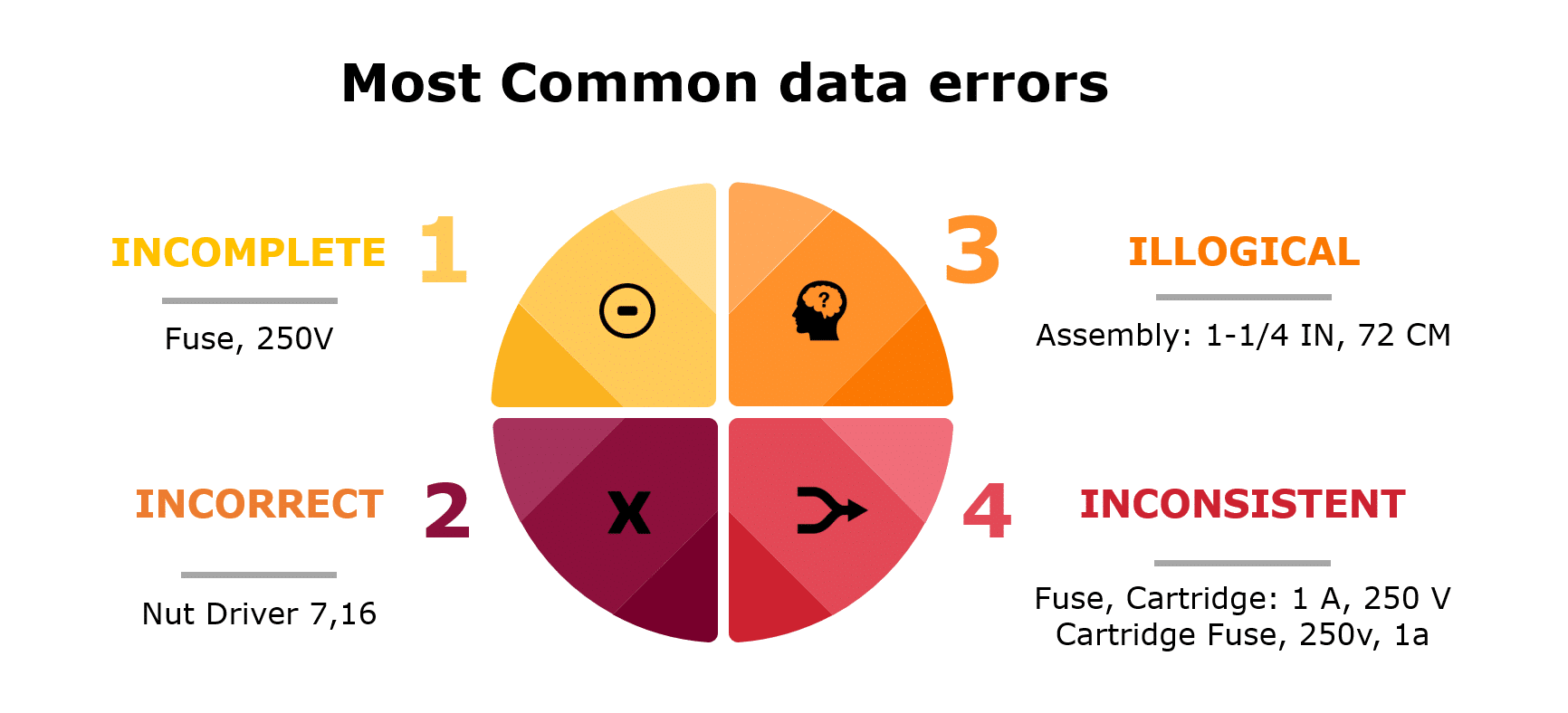MRO Data Audit
Is the data driving your ERP or EAM/CMMS systems reliable and robust?
Are you able to make strategic supply chain decisions based on solid analytics from your systems?
Have you been able to minimize poor ordering practices and optimize inventory, leveraging intelligence from transactional data?
Is your maintenance program very reliable, built on high-quality historical data?
If your answer is “Maybe not” or a firm “No” to any of the questions above, its high time you took a deeper look at the master data that is at the core of your systems. Many issues faced by organizations such as asset failures, plant downtime, inefficient sourcing, MRO overstock, and high maintenance overheads stem from the bad master data that end up driving business decisions for supply chain, maintenance, and operations. According to industry experts, an asset-intensive organization nearly loses 12% of its revenue which is caused by bad data.
A Data Audit is the first and most important step in analyzing the master data quality in ERP / EAM / CMMS systems. We take this diagnostic step with clients, to analyze different data points, understand the data well, identify business issues and recommend a course of action to align the data to business needs. The MRO Data Audit helps an organization identify all kinds of errors, inaccuracies, and integrity problems in their master data, covering multiple functions such as supply chain, procurement, storerooms, maintenance and operations. During the audit process, our Subject Matter Experts analyze multiple data points like material masters, asset registers and Equipment BOMs, as well as transactional history such as work orders and purchase history. Based on this deep analysis, we can showcase how the master data quality may be affecting your business today.
Key goals of a MRO Data Audit are:
- Define business objectives and pain points
- Review Existing master data policies and procedures
- Analyze the material master and vendor master data to identify issues
- Recommend approach for organizing the master data, based on application
- Define corrective actions to improve and maintain master data quality
- Identify taxonomy and schema options for the client
Benefits of a Data Audit
The Data Audit helps you uncover hidden inconsistencies and issues relating to the master data residing within ERP and EAM/CMMS systems. Common MRO data issues seen in most organizations are incorrect part numbers, duplicate parts, wrong/missing classifications, poor descriptions and so on.
By completing the data audit, you can identify how bad data quality may be causing:- Inconsistent purchase patterns
- High costs of sourcing
- Excessive MRO inventory
- Inefficient plant operations
- Increased plant maintenance costs and downtime
- Inaccurate spend analytics

